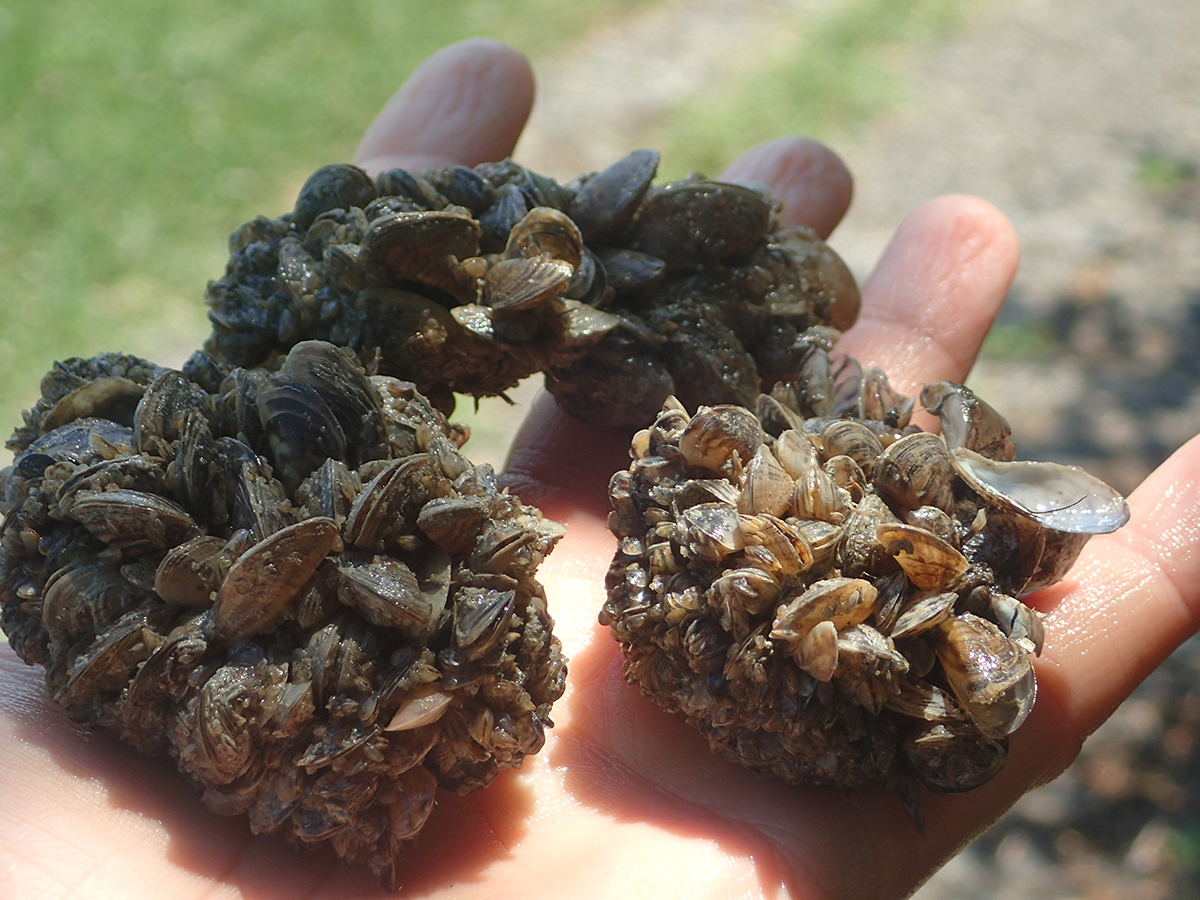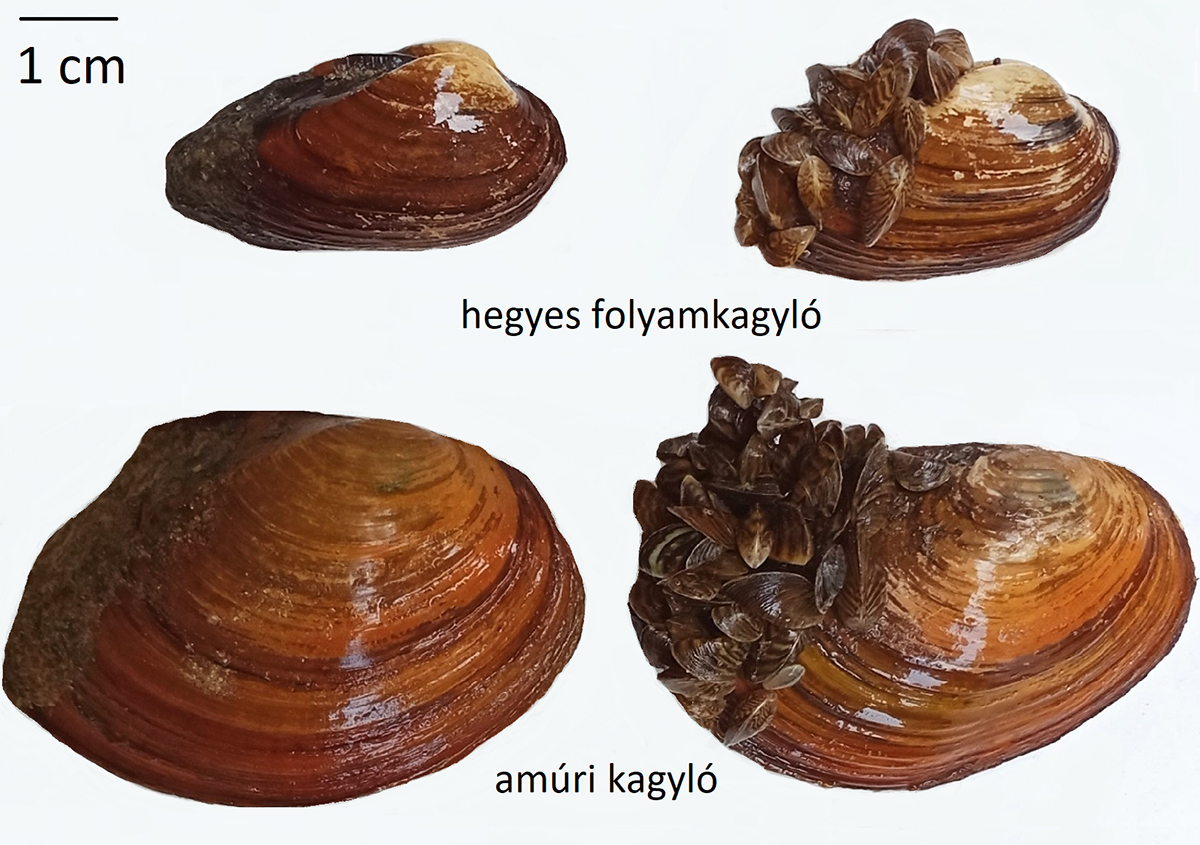Strikingly Similar Yet Unequal in Impact: Invasive Mussels Affect Native Species Differently
Invasive mussel species that are similar in appearance and lifestyle do not pose equal risks to native mussels, according to a joint study by researchers from the HUN-REN Balaton Limnological Research Institute and Nicolaus Copernicus University in Toruń, Poland. The study, which analyses the ecological impact of invasive zebra and quagga mussels introduced into Lake Balaton on large native mussel species, was published in the prestigious interdisciplinary journal Science of the Total Environment.

Mussel clusters collected from the loose sediment of Lake Balaton.
Dreissena species—including the zebra mussel (Dreissena polymorpha) and the quagga mussel (Dreissena r. bugensis)—are among the most successful invasive species, exerting significant pressure on native ecosystems. These small bivalves settle on the shells of larger, predominantly native species in large numbers, hindering their ability to burrow into the sediment, move, and feed. As a result, native species often experience a decline, and in some cases, certain species may even disappear entirely.

Dreissenids settled on large mussels
Using long-term field data, the researchers studied the size, density, and settlement surfaces (either Unionida shells or inanimate rocks) of dreissenids since the appearance of the quagga mussel in 2009. Laboratory experiments were conducted to investigate recolonisation and post-settlement movement behaviour, and to clarify the differing surface preferences of the two mussel species. It was confirmed that the quagga mussel, unlike the zebra mussel, often detaches from surfaces sinking into the sediment, thus exerting less pressure on larger native mussels. On the surface of the sediment, quagga mussels can cluster and form colonies, providing habitats for other organisms. It was also observed and confirmed that, in Lake Balaton, large native mussels may serve as refuges for zebra mussels, which have been significantly reduced on other surfaces since the appearance of the quagga mussel. These findings suggest that the pressure on native host species may be lower in habitats where only quagga mussels are present and is expected to decrease in areas where previously introduced zebra mussels have been displaced by the new invader. However, it is important to remember that Dreissena mussels compete with native mussels for food, as these small invasive mussels can deplete the shared food source—phytoplankton—through their efficient filtration.
Continued changes in the composition of dreissenid assemblages in Europe and North America may result in profound shifts in the environmental impact of these small mussels and, consequently, in the functioning of freshwater communities. This emphasises that Dreissena species are not equivalent both as biofoulers (through mass colonisation) and as ecosystem engineers. It highlights the importance of species identity in assessing community functioning, as even morphologically similar and seemingly equivalent species may differ considerably in their actual impacts.


